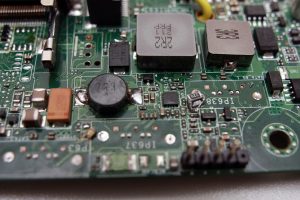If you think your WiFi is slow, it’s time to check on what version your router is currently running. The latest WiFi standard dubbed 802.11ay aims to push the boundaries of wireless connectivity even further that its predecessor 802.11ad aka WiGig (Wireless Gigabit). And if you have not heard either of them, that’s because they are yet to be fully adopted by most router vendors.
Planned for 2019 release, both 802.11ay will operate in the 60 Ghz frequency band. This 60Ghz is important because it’s an unlicensed frequency band that’s available everywhere in the world. This frequency also means there’s more bandwidth to transfer more data much faster. And because most of your other gadgets such as older routers, microwave, wireless bluetooth speaker are operating in a different frequency — mostly 2.4 or 5 Ghz — there’s less interference.
So 802.11ay and 802.11ad are both free, push more bits per second and are less prone to interference from other devices. Both support MIMO, channel bonding and beamforming. Great! But how different are they?
Related post: 802.11 ax the next WiFi standard is expected to top 10 Gb/s data transfer speeds [updated]
802.11ay is definitely faster. It manages to squeeze in four channels on a total bandwidth of 8.64 GHz giving us speeds up to 176 GBit/s as seen below;
1 stream: 44 GBit/s
2 streams: 88 GBit/s
3 streams: 132 GBit/s
4 streams: 176 GBit/s
Essentially 802.11ay promises to multi- Gb/s Wi-Fi speeds of at least 100 Gb/s which expected to be good enough to applications such as Augmented Reality (AR) and Virtual Reality (VR). With these insane speeds, 802.11ay aims to all together replace USB and HDMI cables in your living room which are currently used to connect to external displays and transfer huge files like 4K videos.
Related post: WiFi 802.11 ad vs ac: it’s a choice of speed over distance
802.11ad on the other hand supports data rates of up to 8 Gbit/s on six channels using maximum bandwidth of 2.16 GHz. 802.11ad is already being used in “triband” routers such as Netgear R9000 Nighthawk X10AD7200 Smart which use 802.11 a/b/g/n/ac/ax on bands 2.4 GHz and 5 GHz and 802.11ad in the 60 GHz range.
802.11ay is not yet in the wild until sometime next year. So if you want to use a 60 Ghz fast Gigabit wireless router, then 802.11ad Triband router is your choice.
Image: dday.it












